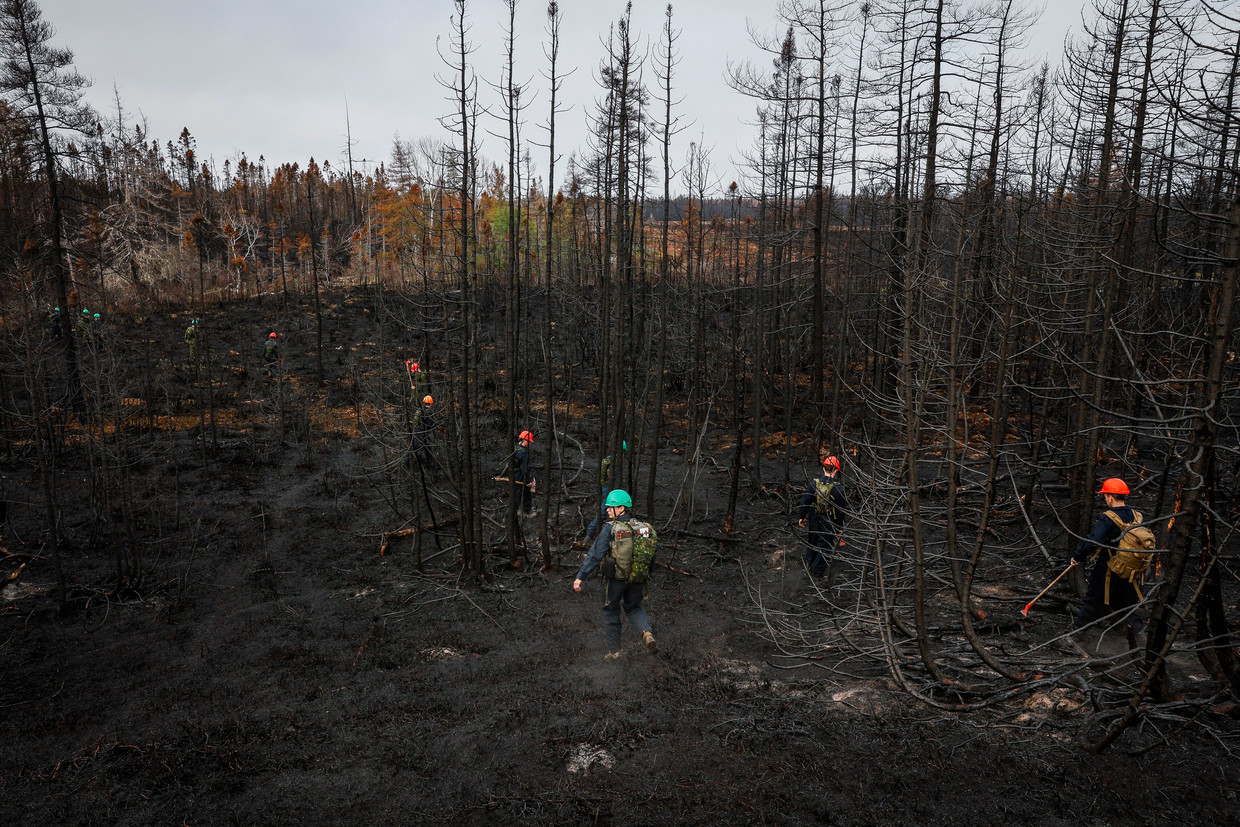Globally, the climate is making crazy leaps and shrubs are breaking records. what is going on? “What we are seeing now is beyond expectations.”
Records are broken on land and sea. Not unexpected in a warming world. Although it is not always easy to know the exact share of climate change.
warm oceans
“These are some of the scariest infographics on the internet right now,” Dutch writer Rutger Bregman wrote on Twitter. One of these graphs shows the exceptional warming of the North Atlantic. The water has been unusually warm for this time of year since March.
On June 11, the water temperature was 22.7 degrees Celsius, breaking the previous 2010 record by half a degree. “This is definitely very exceptional,” says Peter Landshutzer, director of research at the Flanders Marine Institute (VLIZ). It is known that in a world that is getting warmer, the oceans are also warming. “But what we’re seeing now is beyond expectation,” Landshutzer said.
The cause is likely to be a combination of climate change and natural variability. El Niño swells weaken the trade winds. They blow dust from the desert into the ocean, which has a cooling effect because it reflects sunlight. “Now this effect is less strong,” says meteorologist David Dehenau (RMI). “Less wind also means less evaporation and less mixing of the water layers, which means the temperature rises more easily.”
Usually, thanks to El Niño, there are fewer hurricanes over the Atlantic Ocean. But sea water temperatures that are too warm can increase the risk of hurricanes. “It remains to be seen what effect will gain the upper hand,” says Dehenau.
little sea ice
Another disturbing graph, according to Bergman, shows how surface sea ice around Antarctica is heading toward a record low. There is currently about two million square kilometers less sea ice floating around the continent than is typical for this time of year, and one million square kilometers less than the previous low. “A very strong anomaly,” says glaciologist Philipp Huybrechts (VUB).
Unlike the Arctic, where melting sea ice is clearly linked to climate change, this is less clear around the Antarctic. “We have too little insight into what’s going on to make solid statements on this topic,” says Huybrechts.
Until 2016, the surface of sea ice around Antarctica increased slightly, says glaciologist Frank Patten (ULB). “Since then we have seen a downturn, and currently we are at a ‘historic’ low.” Although, according to Patten, we should treat that with a grain of salt, since we only have four decades of reliable data.
According to Patten, changing wind patterns around Antarctica as a result of El Niño may play a role, as well as warming ocean waters around Antarctica. “Natural variability and climate change interact,” Patten says.
This is not good news at all. Sea ice forms a kind of buffer that protects land ice from wave action. “Reduced sea ice may accelerate the birth of land ice, with consequences for global sea level rise,” says Patten. “In this regard, this is worrying.”
burn recording
Canadian wildfires are also breaking previous records. An area larger than Belgium has already been engulfed in flames, and tens of thousands of people have had to flee their homes.
Climate change increases the likelihood of high temperatures and prolonged droughts, which increases fire risks. Farther north, the ‘fire season’ also lasts longer because snow melts faster, and frequent heat storms increase the chance of lightning strikes causing flames to explode, as geographer Sander Weraverbeek previously explained. the morning Outside.
Forest fires energy emissions
in Canada
source Canadian Wildland Fire Information System
Energy emissions in wildfires in Canada
source Canadian Wildland Fire Information System
But even then, reliable data sets don’t go back in time very far. This makes it difficult to say exactly how much we see climate change at work here, or simply natural variability. This requires attribution studies, which determine exactly how likely it is that global warming will be caused by certain extreme weather events.

One such analysis found that climate change has made the 2020 heatwave and fires that ravaged Siberia nearly 600 times more likely. No such study has been conducted for Canada. But Veraverbeek is already referring to the speed with which the two extremes follow one another. “There have been severe fires in Siberia in 2019, 2020 and 2021. A clear impact of climate change, and we are seeing these impacts faster than expected. We only predicted what is happening now around 2050.”
our heat wave
Many countries in Asia are groaning under the brunt of the heat. Record lows fell in China and Vietnam, among other countries, where the mercury soared above 44 degrees earlier this month.
Our heat wave is unusual for this time of year, but not without precedent. This also happened in 2006 and in 1947 and 1922 it was even earlier in the year.
Precipitation deficit is increasing. The drought has not yet broken records, although it will be tense. “In 2007, it didn’t rain a single drop over UCL for 36 days from March to early May,” says Dehenau. “If it stays dry until next Tuesday, this record will be broken.”
As for other extremes, attribution research is needed to clarify the exact contribution of climate change, Dehenau says. “But there is no doubt that global warming makes these kinds of extremes more likely.”

